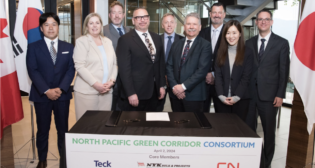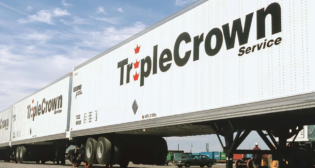
Cowen State of the Ports Conference Call: ‘Railroads the Largest Coming Bottleneck’
Written by Matt Elkott, Jason Seidl, Bhairav Manawat and Elliot Alper, TD CowenWidely reported excess freight from China due to shutdowns appears over-hyped, and a potential upcoming backlog (which is expected to arrive in the last week of June) is likely from inventory pull-forward, equipment challenges, and a challenged rail network. Our panelists—the head of a West Coast port, the CEO of a drayage company, and the CEO of a container consolidator and intermodal company— were bullish of 2022, but expect softness in 2023. Consumers continue to lean into “Dinner and Disney” in a spending shift.
Inbound freight has been fairly steady the past eight weeks despite headlines of lockdowns in China, with only little uptick in coming weeks despite restrictions lifting in Asia. While some of China’s largest ports (Shanghai) saw shutdowns, retailers and management teams pivoted to other smaller ports in China to move cargo, normalizing a lot of cargo movement despite daunting headlines. There has been an uptick in freight the past two weeks on the Port of Los Angeles/Long Beach, but this appears to be largely following seasonal patterns. The real challenge is that retailers are pulling orders forward (back to school, fall fashion, even holiday season) so far in advance that may create elevated and unnecessary congestion, which our panelists anticipate will hit later this month and the first week of July.
Lessons were learned last year at the Port of LA/LB, and the largest bottleneck over the coming weeks and months will be the rail network. The majority of the cargo coming into the ports was inventory pull-forward (patio furniture coming from Asia in September that wasn’t needed until spring). The rails have struggled to keep up, particularly on the West Coast (despite a hiring frenzy), and both equipment and labor continue to challenge the network. One panelist stated that the rails do not have a quick fix, and it will take at least 2-3 months to see improvements from their end, which may hinder near-term intermodal growth, in our view. Because there are still problem with network fluidity, the western rails can’t take on as much freight as shippers would like. One panelist shared an anecdote that a retailer is paying thousands of dollars a day in demurrage fees because inventory is sitting in containers in Chicago. This retailer has little choice but to write the check because there is no available warehouse space, which is still at a premium and (except during times of economic downturn) gets absorbed quickly.
There continues to be a backlog of vessels, equipment and space in all major markets, and while dwell times have improved at the ports, they have not at the destinations.
Labor negotiations on the West Coast will almost certainly not conclude before June 30 (when they expire), but this is expected and should not cause concern. All parties, including the White House, are watching very closely and will not likely let negotiations go too far off course. Regarding the infrastructure bill, there is ~$17 billion to the Ports, but it is too early to tell where and when these will play out (applications are due this summer and projects take 1-10 years).
Panelists shared thoughts on how COVID shaped the future of supply chains. An ecommerce revolution has created “couch culture,” forcing retailers to build hundreds of warehouses all over the country, instead of 2-3 major hubs, pressuring capacity and development. Consumers used to be the last mile drivers. Another panelist stated he doesn’t believe the idea of on-shoring or near-shoring will play out as much as some think, instead companies will lean on “near-storing,” and hold a much bigger inventory base at their warehouses, so they are not “short of key ingredients” like many were through COVID.
On a macro viewpoint, all panelists spoke to a somewhat bullish view for 2022, but see softness in 2023. Most retailers are planning for a softer year, with volumes in Asia (not from lockdowns) down 10%, according to one panelist. One panelist cited the new trend of “Dinner and Disney,” as consumers noticeably shift their spend away from physical goods. Lastly, new vessel builds will come on line next summer, which should ease congestion (and pricing) if cargo has not yet normalized.



